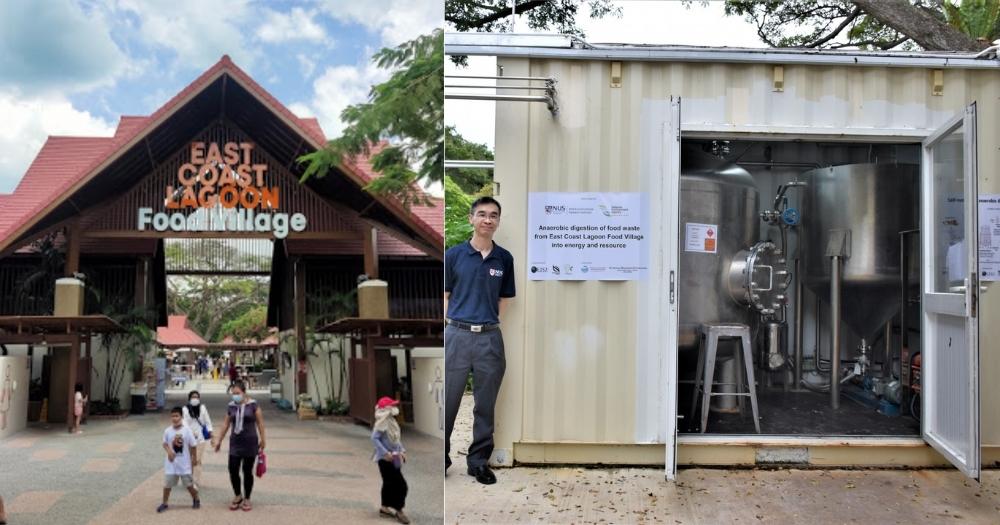Follow us on Telegram for the latest updates: https://t.me/mothershipsg
A team from the National University of Singapore (NUS) has created a digester that can break down food waste into biogas and nutrient-rich digestate.
The biogas can be used to generate electricity while the digestate can be used as fertiliser for plants.
The digester will be piloted at East Coast Lagoon Village, with the support of National Parks Board (NParks) and National Environment Agency (NEA).
NParks and NEA have signed a Memorandum of Understanding to collaborate on this pilot project.
Pilot trial
The pilot project examines the feasibility of using anaerobic digestion as an on-site treatment solution to close the food waste loop at its source.
During the trial, food waste generated from stallholders and patrons at East Coast Lagoon Food Village will be treated by a containerised Anaerobic Digestion system developed by NUS researchers.
According to the joint media release, the 60 stalls at East Coast Lagoon Food Village generate about 150kg of digestible food waste each day. This includes fruits and vegetable trimmings, preparation scraps from the stalls and leftover table waste.
The Anaerobic Digestion system is designed to handle this amount of food waste.
The media release also explained that East Coast Lagoon Food Village was chosen as the location for the pilot trial as there is sufficient space within the food village to house the Anaerobic Digestion system.
Additionally, the bio-fertilisers produced from the system can be applied conveniently to the surrounding flora in the East Coast Park.
NParks will be studying the efficacy of using the digestate as fertiliser for ornamental plants in the park.
How the Anaerobic Digestion system works
In the anaerobic digestion system, the segregated food waste will be blended and be fed to the microbes in the container.
The microbes will convert the food waste into methane-rich biogas, and nutrient-rich liquid residue that is also known as digestate.
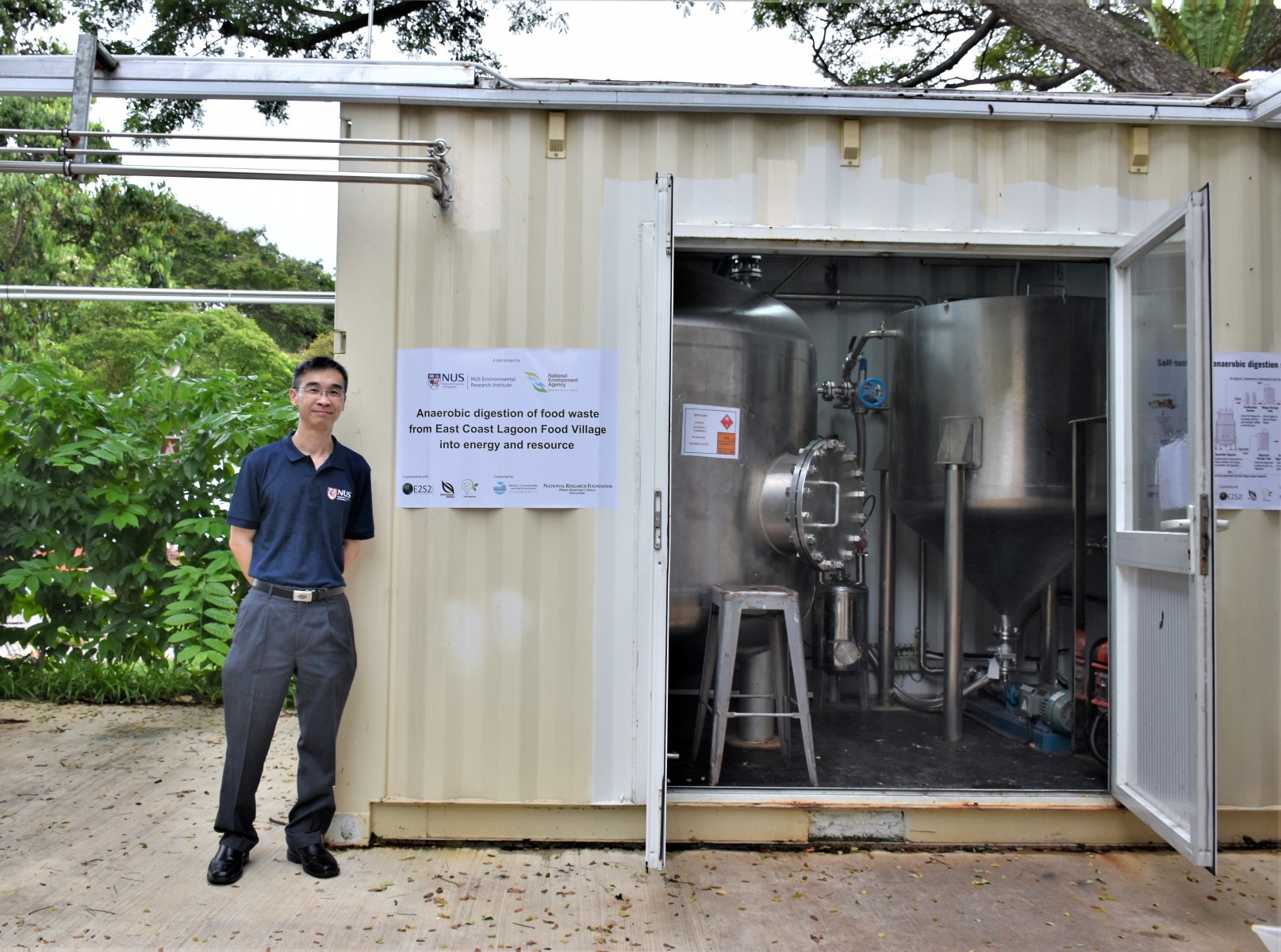 Tong Yen Wah is an Associate Professor from the NUS Department of Chemical and Biomolecular Engineering. He leads the NUS team that developed the digester trialled at East Coast Lagoon Village (next to him). Image from NUS website.
Tong Yen Wah is an Associate Professor from the NUS Department of Chemical and Biomolecular Engineering. He leads the NUS team that developed the digester trialled at East Coast Lagoon Village (next to him). Image from NUS website.
The biogas produced can be used to generate electricity, while the digestate can be used as fertiliser for landscaping.
The electricity generated will be used to power the system itself. The excess electricity can power up to 31 wall-mounted fans in the food village and two mobile phone charging points at the food village.
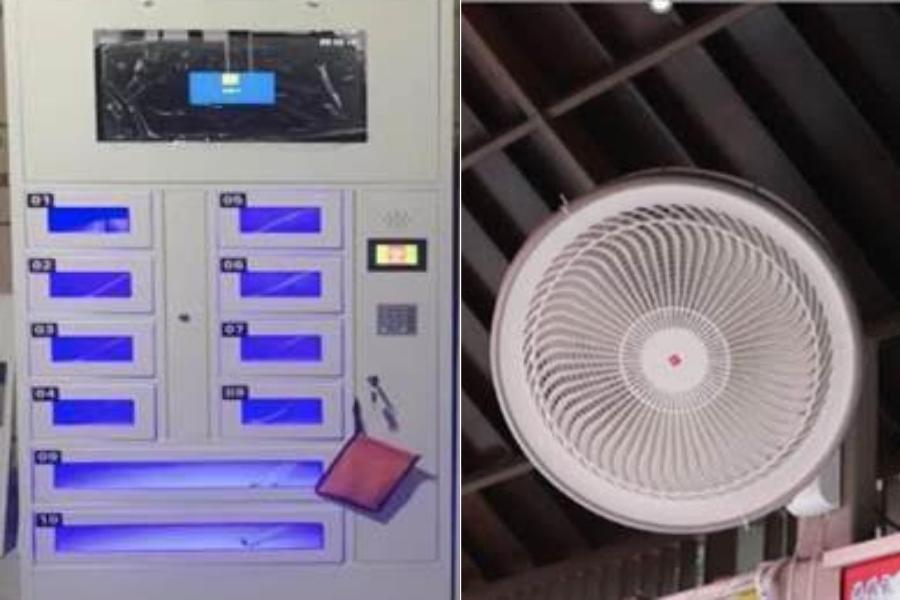 One of two phone charging stations and one of the wall mounted fan. Image courtesy of NEA.
One of two phone charging stations and one of the wall mounted fan. Image courtesy of NEA.
Here's an overview of how the digester works:
 Diagram showing the anaerobic food waste digestion process. Image courtesy of NEA.
Diagram showing the anaerobic food waste digestion process. Image courtesy of NEA.
Preparing diners and stall holders for the pilot project
For the pilot project to run smoothly, NEA and NUS will actively engage the stakeholders involved.
For example, they will be raising awareness on the importance of segregating food waste at the hawker centre and what are the benefits in using this digester.
Posters and wall stickers will also be put up within the food village to remind diners to return their trays and used crockery, and encourage stallholders and cleaners to proactively segregate food waste from other waste.
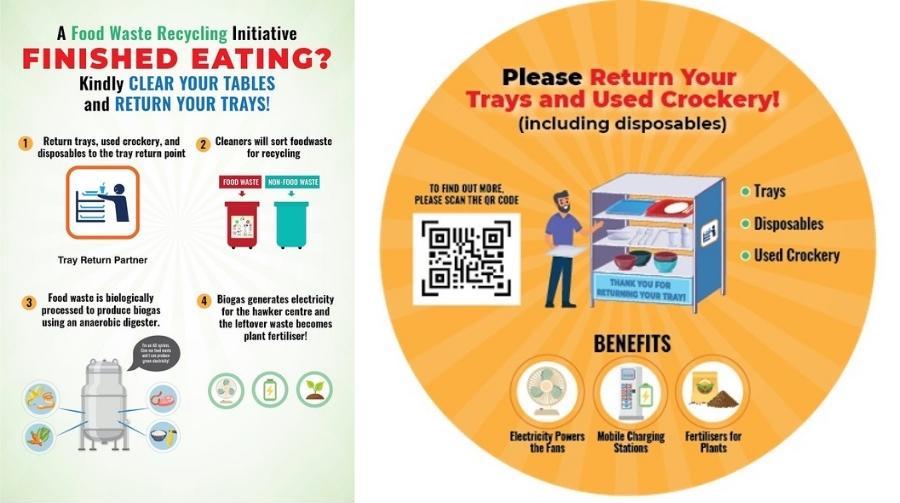 Educational collaterals. Image courtesy of NEA.
Educational collaterals. Image courtesy of NEA.
Stallholders and cleaners were provided with covered bins to collect the food waste.
The food waste will then be emptied into five smart bins located around East Coast Lagoon Food Village.
These smart bins record and store the amount of segregated food waste each time.
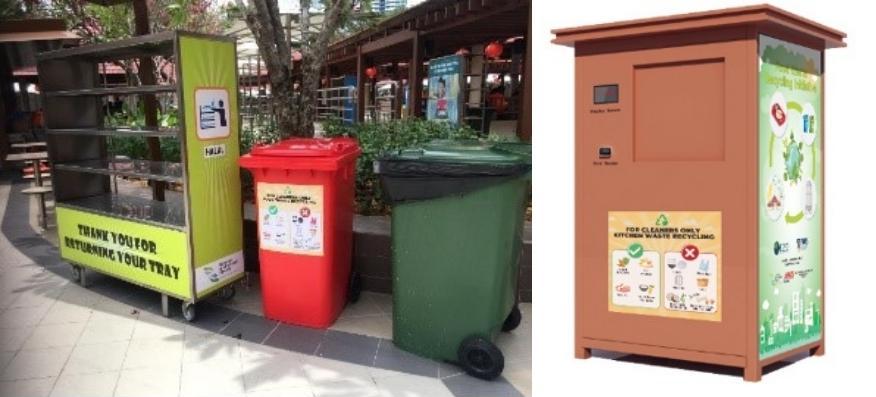 Example of covered bins and smart bins. Image courtesy of NEA.
Example of covered bins and smart bins. Image courtesy of NEA.
A sub-system automates the feeding of food waste into the Anaerobic Digestion system to minimise contamination of food waste.
Other sub-systems are also integrated to enhance the Anaerobic Digestion system's performance, such as a waste bin loader, sorter, and shredder.
 Where the system is located. Image courtesy of NEA.
Where the system is located. Image courtesy of NEA.
The NUS team, who will be overseeing the operation and maintenance of the Anaerobic Digestion system, will also be studying the human psychology and behavioural factors in encouraging hawkers and cleaners to segregate food waste from other waste.
Tong Yen Wah, the associate professor who heads the team, said: "Our NUS team is excited to be leading this effort, with support from NEA and NParks, to reduce waste in Singapore and turn food scraps into a green energy resource."
NEA's Chief Technology Officer, Patrick Pang said: “Innovations such as onsite anaerobic digestion make it possible to create useful products from food waste, which would otherwise have to be sent for incineration."
Food waste has been identified as one of the priority waste streams under Singapore’s Zero Waste Masterplan.
According to the media release, food waste accounted for about 11 per cent of the total waste generated in Singapore in 2020, and only 19 per cent of the food waste was recycled, while the rest was disposed at waste-to-energy plants.
Other cool Singapore initiatives tackling waste
https://mothership.sg/2021/07/inside-e-waste-recycling-facility/
Top image from NUS website and Ken Loi/Google Maps
If you like what you read, follow us on Facebook, Instagram, Twitter and Telegram to get the latest updates.
